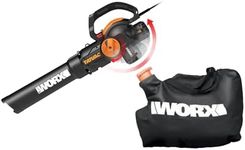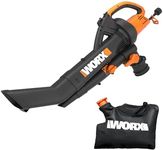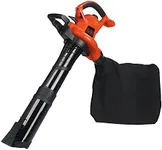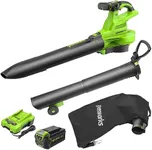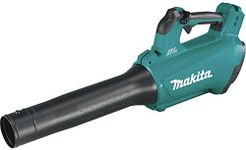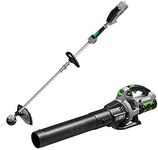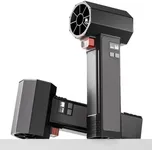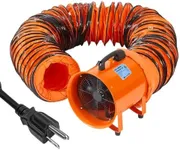Buying Guide for the Best Cordless Blower Vac
Choosing the right cordless blower vac can make your yard work much easier and more efficient. A cordless blower vac is a versatile tool that can help you clear leaves and debris from your yard without the hassle of cords. When selecting the best model for your needs, it's important to consider several key specifications to ensure you get the right balance of power, battery life, and functionality. Here are the key specs you should focus on and how to navigate them to find the best fit for you.Battery VoltageBattery voltage indicates the power of the blower vac. Higher voltage typically means more power, which can be useful for heavy-duty tasks. Common voltage ratings range from 18V to 60V. For light yard work, such as clearing small areas of leaves, a lower voltage (18V-24V) may suffice. For larger yards or more demanding tasks, consider a higher voltage (40V-60V) to ensure you have enough power to get the job done efficiently.
Battery LifeBattery life determines how long the blower vac can operate on a single charge. This is crucial for uninterrupted work, especially in larger areas. Battery life is often measured in ampere-hours (Ah). A higher Ah rating means longer battery life. For small to medium-sized yards, a battery with 2.0Ah to 4.0Ah should be adequate. For larger properties or extended use, look for batteries with 5.0Ah or more to avoid frequent recharging.
Air SpeedAir speed, measured in miles per hour (MPH), indicates how fast the air is expelled from the blower. Higher air speeds can move heavier debris and wet leaves more effectively. Typical air speeds range from 100 MPH to 250 MPH. For light tasks like clearing dry leaves, a lower air speed (100-150 MPH) is sufficient. For more challenging tasks, such as moving wet leaves or heavier debris, opt for a higher air speed (200-250 MPH).
Air VolumeAir volume, measured in cubic feet per minute (CFM), indicates the amount of air the blower can move. Higher CFM ratings mean the blower can cover larger areas more quickly. Common CFM ratings range from 200 to 600. For small yards or light debris, a lower CFM (200-300) is adequate. For larger yards or heavy debris, look for a higher CFM (400-600) to ensure efficient clearing.
WeightThe weight of the blower vac affects how easy it is to handle and use for extended periods. Lighter models are easier to maneuver but may have less power or battery life. Heavier models may offer more power but can be tiring to use. Consider your physical strength and the duration of use. For short, occasional use, a lighter model (5-7 pounds) is ideal. For longer, more frequent use, you may need to balance weight with power, opting for a mid-range weight (8-10 pounds).
Mulching RatioThe mulching ratio indicates how effectively the blower vac can reduce the volume of collected leaves and debris. A higher ratio means better mulching efficiency, which is useful for composting or reducing waste volume. Common ratios range from 10:1 to 16:1. For basic yard maintenance, a lower ratio (10:1) is sufficient. For more intensive mulching needs, such as creating compost, look for a higher ratio (14:1 to 16:1).
Noise LevelNoise level, measured in decibels (dB), indicates how loud the blower vac is during operation. Lower noise levels are more comfortable for the user and less disruptive to neighbors. Typical noise levels range from 60 dB to 90 dB. For residential areas or noise-sensitive environments, choose a model with a lower noise level (60-70 dB). For less restrictive areas, a higher noise level (80-90 dB) may be acceptable.

